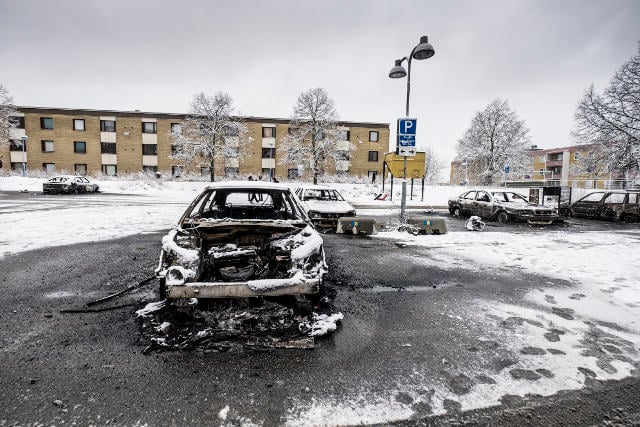If criminals in certain areas know they will escape unpunished because no one dares testify against them, then they will grow more powerful. Regardless of whether it is possible to walk around there without problems.
In a Swedish police report from 2015, these places are called “particularly vulnerable areas”. “No-go zones” has become a more common but controversial label. Would you even dare venture out there? That question has received international attention.
When the American freelance journalist Tim Pool spent the night in Rosengård, he was not attacked. Aftonbladet triumphantly presented his account. Ha, what do you say now? Of course you can travel to these no-go zones!
When he later visited Rinkeby, on the other hand, things became threatening and Pool quickly changed his view. But that's all a sideshow, regardless of what happened.
Because neither the term the police use nor “no-go zones” captures what's so special about these areas. The police aren't arguing that it's dangerous to go there and look around for a bit, or that these areas are more vulnerable (to what?) than other socially troubled areas.
Two factors stick out: the police can't work there in a normal way without special routines or equipment; and people are reluctant to turn to the police and the legal system because of systematic threats from criminals. The power balance has shifted: society's influence is weakened and on the retreat. You could say these are retreat areas.
Instead of asking if you would dare travel to Rosengård or Rinkeby you should ask if you would dare testify against your neighbour if you lived there.
My family live in Hägersten in southern Stockholm. One evening my wife witnessed how two men beat a taxi driver and shouted racist comments when they skipped a fare. It went to trial, and my wife was called to testify.
One of the men lives around a hundred metres away and has a pretty physical look about him. He wasn't going to disappear after the trial. We would be likely to encounter him again. The testimony was crucial for him to be sentenced. The question that then arises is whether you would dare to testify? Would you dare run into him again after that?
We live in Hägersten. Here, you would dare testify. But if it had happened in Rinkeby? In Rosengård, or in Seved? Would you dare then? And if you also knew that you couldn't move away from there with your family? It's just a rhetorical question. We know the answer. This is what makes these areas “particularly vulnerable” .
What does this (fully justified) fear mean for the power balance in these areas? What does it mean for the residents? For someone who runs a shop there?
The kind of people seizing power are like the brute in our neighbourhood. Here in Hägersten he isn't in charge, because my wife testified and he was convicted. But in Rinkeby, or in Seved, it's exactly people like him who can strike fear into the neighbourhood, out of reach of the justice system.
It is true that words matter and should be chosen with care. But that responsibility also falls heavily on anyone who pushes euphemistic and blurred labels. When you eagerly write about how you dared to travel out to Rosengård or Rinkeby, as if that is the crucial question, that also matters. Are you by extension pushing this problem in the right direction? Or the wrong one?
Peter Santesson is a political scientist and chief opinion analyst at Demoskop. This is a translation of his opinion piece first published in Swedish by Dagens Samhälle.



 Please whitelist us to continue reading.
Please whitelist us to continue reading.